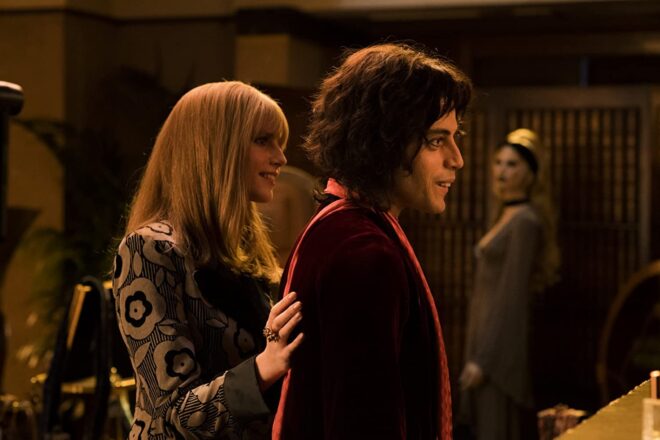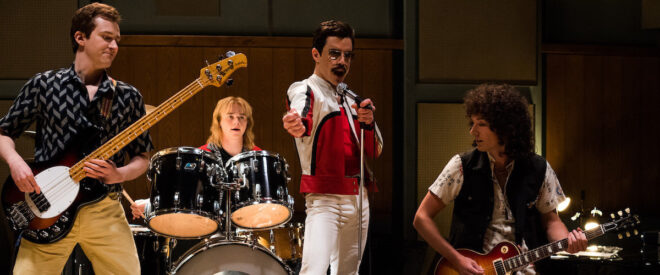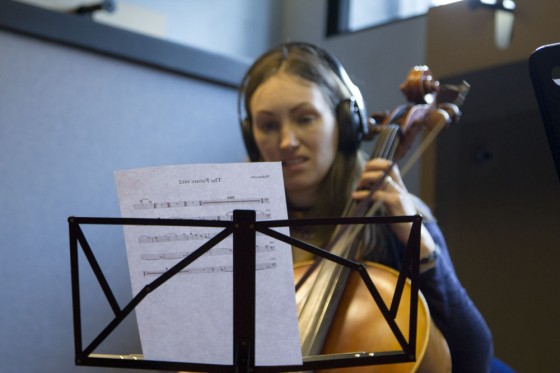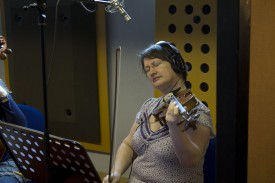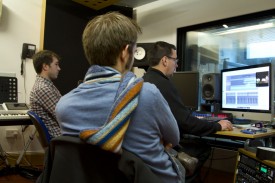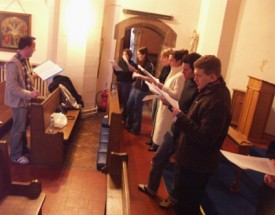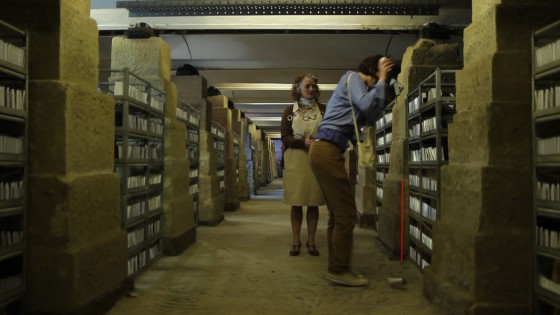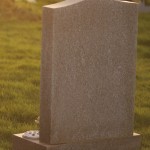 Spaceman from Pluto is a 1985 sci-fi comedy starring Eric Stoltz and Christopher Lloyd. Lloyd plays Professor Brown, an eccentric scientist with a pet chimp, who builds a time machine out of an old fridge. Stoltz portrays a teenage video pirate, Marty McFly, who is accidentally sent back to the 1950s in the machine. After almost wiping himself from existence by endangering his parents’ first meeting, Marty returns to his own time using the power generated by an atomic bomb test in the Nevada desert.
Spaceman from Pluto is a 1985 sci-fi comedy starring Eric Stoltz and Christopher Lloyd. Lloyd plays Professor Brown, an eccentric scientist with a pet chimp, who builds a time machine out of an old fridge. Stoltz portrays a teenage video pirate, Marty McFly, who is accidentally sent back to the 1950s in the machine. After almost wiping himself from existence by endangering his parents’ first meeting, Marty returns to his own time using the power generated by an atomic bomb test in the Nevada desert.
Fortunately this movie was released in some alternate version of history. In our timeline it went through a number of changes in writing and production to become the blockbuster classic Back to the Future.
For co-writer and producer Bob Gale it all started when he came across his father’s highschool yearbook and realised that, had he and his father been peers, they would never have been friends. Spotting the comedy potential in the concept of a teenager going to school with his parents, Gale sat down with co-writer and director Robert Zemeckis to develop a script.
The pair knew they needed a time machine and decided that it would be created by a backyard inventor rather than some government organisation. “I can’t really put my finger on when I stumbled on the idea of time travel,” said Gale in 2002, “whether it was from watching The Twilight Zone, reading Superman comics, or when the H.G. Wells Time Machine – the George Pal movie – came out, but I do remember being totally fascinated by that film.”

Getting Back to the Future made proved challenging. Most of the studios that Gale and Zemeckis approached found the script too sweet and innocent compared with the typical R-rated teen movies of the time. Disney, on the other hand, felt that the mother-falls-for-son plot was too taboo.
Making matters worse was the duo’s less than spectacular track record. Their first two feature films, I Wanna Hold Your Hand and Used Cars, were both box office flops. They even had the dubious honour of writing the least successful film of Steven Spielberg’s directorial career so far, 1941.
Everything changed when Michael Douglas hired Zemeckis to direct 1984’s Romancing the Stone. The adventure romp was a hit and suddenly everyone in the notoriously fickle Hollywood wanted Back to the Future. Spielberg, who had always loved the script, signed on as executive producer and – after a false start at Columbia – the movie was green-lit by Universal Pictures.
Studio president Sid Sheinberg requested a number of script changes. Professor Brown became “Doc” and his chimp became a dog. Marty’s video piracy (which would have explained his possession of the camcorder with which he films the time machine’s test run) was written out, as the studio were understandably unwilling to promote the revenue-slashing crime.
Sheinberg also hated the title Back to the Future and wanted it changed to Spaceman from Pluto, a reference to the comic clutched by the Peabody children after the DeLorean crashes into their barn on arriving in 1955. Zemeckis and Gale turned to Spielberg to help them dodge this title without offending Sheinberg; his solution was to send a memo saying what a big laugh they all got out of Sheinberg’s joke. The studio president never mentioned it again.
The title Back to the Future was retained, but the barn scene did prompt another change. By this point the writers had realised that an immobile fridge was not dramatic or practical as a time machine, and were searching for a suitable vehicle for Doc to build it into. They chose the slick, stainless steel DeLorean with its futuristic gull-wing doors so that the Peabody family could mistake it for a UFO.
Budget concerns drove the elimination of the A-bomb scene. Shooting on location and building the miniatures of the bomb and its test tower were estimated to cost $1 million. Switching the power source to a lightning bolt not only saved this money by keeping all the action in Hill Valley, it enhanced the time metaphor represented by the clock tower as well as giving Doc an active part in the climax rather than being stuck in a blast bunker with a walkie-talkie.
The filmmakers’ first choice for the role of Marty McFly was Michael J. Fox, the 23-year-old star of sitcom Family Ties. But that show’s creator, Gary David Goldberg, refused to even let Fox see the Back to the Future script, fearing the actor would love it and resent Goldberg for not releasing him from his Family Ties commitment.
A disappointed Zemeckis accordingly began screen-testing other actors, eventually narrowing the choice down to C. Thomas Howell (best known for the coming-of-age drama The Outsiders) and Eric Stoltz (who had appeared in Fast Times at Ridgemont High and The Wild Life). It seems that Sid Sheinberg was Stoltz’s most vocal advocate. Gale recalled the studio president declaring: “I’m so convinced that Eric is going to be great in this part, if it doesn’t work out you can recast it and start all over again.”
No-one expected that to actually happen.
Filming began on November 26th, 1984. The logistics of transforming a real town into Hill Valley in both 1955 and 1985 were daunting, so instead production designer Lawrence G. Paull adapted the town square set on Universal Studios’ backlot, which had originally been built for the 1948 film noir An Act of Murder.
Special effects supervisor Kevin Pike had taken three DeLoreans and, working to concept art by the legendary Ron Cobb amongst others, fitted them with a variety of aircraft surplus parts and other junk to create the iconic time machine. The “Mr. Fusion” generator added to the vehicle in the final scene started life as a coffee grinder.
Cast in the role of Doc Brown was Christopher Lloyd, whose prior roles included a Klingon commander in Star Trek III: The Search for Spock, a psychiatric patient in One Flew Over the Cuckoo’s Nest and five years in the sitcom Taxi. In another alternate timeline he wasn’t involved in Back to the Future either, having binned the script in favour of a stage role in New York; it was his wife who made him reconsider.
Basing the character on the conductor Leopold Stokowski, Lloyd made the Doc larger than life. Eric Stoltz had a very different approach, a method approach, focusing on the serious aspect of Marty’s out-of-time predicament and apparently ignoring the fact that he was starring in a comedy. “Eric didn’t get it,” camera assistant Clyde E. Bryan remembered in 2015. “Eric didn’t understand the physical, pratfall type of humour that Bob [Zemeckis] was looking for.”
By the sixth week of filming, almost halfway through the schedule, Zemeckis knew he had a huge problem. After conferring with Gale and his fellow producer Neil Canton, the director asked Spielberg to come to the editing suite and watch the 45-minute rough cut of everything that had been shot so far. All the filmmakers agreed that Stoltz had to go.
Unwilling to have Universal shut down the film and suffer the attendant negative press, Zemeckis kept filming with Stoltz for another week, with most of the cast and crew unaware of the situation. Meanwhile, behind the scenes, Canton worked out exactly how much reshoots would cost ($4 million) while Zemeckis and Gale went back to Goldberg at Family Ties, begging him to let Michael J. Fox take the role. Goldberg agreed on condition that the TV show would take priority. Fox himself claims to have merely weighed the script in his hand before agreeing to do it.
During the lunch break on Thursday, January 10th, 1985, halfway through filming the DeLorean’s test run in the car park of the Twin Pines Mall, Zemeckis called Stoltz into his trailer and broke the bad news. By the following Monday, Michael J. Fox was Marty McFly.
The young actor’s schedule was exhausting. He would wake at 9am, work on Family Ties from 10am to 6:30pm, get driven to Universal and shoot Back to the Future until 2:30am. Any scenes that required Marty in daylight had to be filmed at weekends.
Nonetheless, Fox somehow managed to squeeze in guitar lessons in preparation for Marty’s performance at the Enchantment Under the Sea Dance. He already had some experience with the instrument, but was determined to learn to play “Johnny B. Goode” note for note so that he could finger-sync perfectly to the pre-recorded track. Marty’s singing voice was provided by Mark Campbell, while the energetic choreography of his performance incorporated the signature moves of Pete Townshend, Jimi Hendrix and Eric Clapton as well as Chuck Berry.
The scene is one of the most memorable in the movie, but Zemeckis and Gale were very worried about it during editing. “It’s the only scene that doesn’t advance story or character, and we didn’t know how that was going to play,” said Gale. A preview screening in San Jose removed any doubts; the audience loved “Johnny B. Goode” and everything else about the movie.
After a second preview, this time with Sid Sheinberg in attendance, Universal realised they were onto a winner and moved the film’s release date up to the July 4th weekend, paying through the nose to accelerate post-production.
“I want it to be violent,” Zemeckis told the animators creating the effect of the DeLorean breaking the time barrier, “something akin to a Neanderthal sitting on the hood of the car, chipping away at the fabric of time in front of him.” The hand-drawn cell animation combined with built-in lighting on the car and actual fire trails that had been captured on location, plus additional pyrotechnics overlaid after the fact, created the signature effect.
Meanwhile, Alan Silvestri assembled the largest orchestra in Universal’s history to record Back to the Future’s iconic score, and a tie-in single was provided by Huey Lewis and the News. The latter took a couple of attempts to get right; Lewis’ first submission was a minor-key track that didn’t work at all, according to Zemeckis. It was only after the filmmaker showed Lewis the skateboarding scene that he understood the upbeat mood required and composed “The Power of Love”.
Fox was away filming a Family Ties special in England when Back to the Future was released. He was surprised to get a call from his agent telling him that it was the biggest film in America. It spent 12 weeks at the top of the US box office charts and quickly became part of popular culture, with even Presidents Reagan and Bush Senior giving speeches about taking the country “back to the future”. To date it has grossed almost $400 million.
Summing up the film’s appeal in 2002, Gale offered: “There’s something very special about this story that everyone can identify with, the idea of trying to imagine what your parents were like when they were kids – that just touches everybody.”
When Back to the Future was released on VHS in May 1986, fans noticed a small change from the theatrical version. There as expected was the DeLorean’s lift-off and departure to the future – originally intended by Zemeckis and Gale simply as a joke on which to end the story. But now, sandwiched between that final scene and the end credits, was a caption.
The caption read: “To be continued…”







